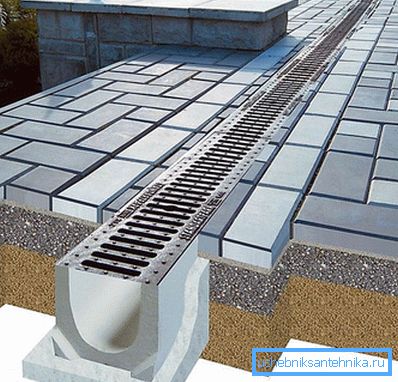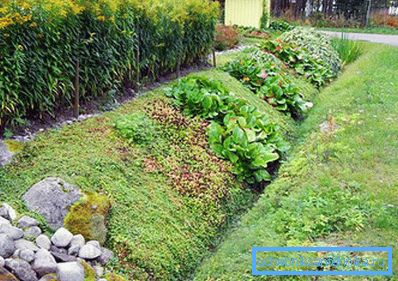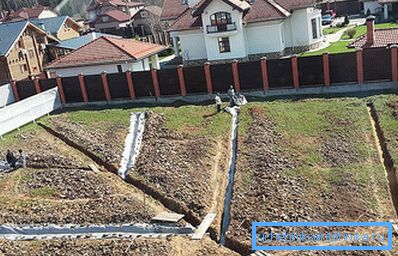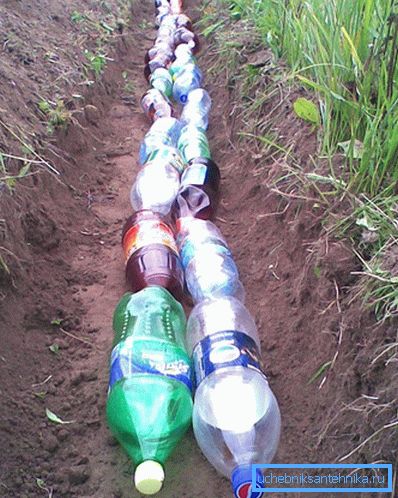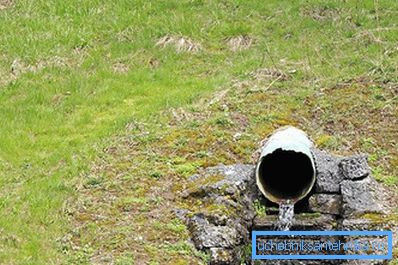Drainage of the plot itself
Water is a source of life, but at times it can also have a detrimental effect. If there is soil on your site that does not allow moisture to pass through, and there is a lot of precipitation, then excess water will destroy the foundation of the house and cause many more misfortunes. To avoid all these troubles, it is necessary to drain the site. This system will allow water to be removed and, therefore, extend the service life of buildings and structures. How to do it yourself will be discussed in this article.
What drainage system to choose?
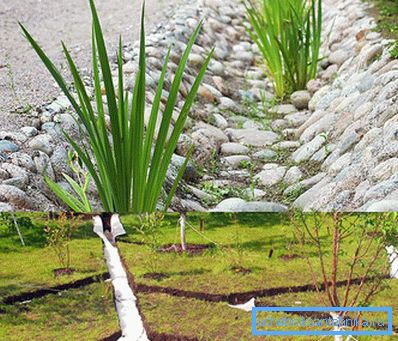
Before answering the question of how to make a site drainage, it is worth talking about the existing water drainage systems. It is from this that you will make a start when choosing used materials and devices. There are several such systems; conventionally, they can be divided into two types:
- open drainage;
- closed drainage.
The first option is the easiest and cheapest. Most people do the water flow in the country or in their garden in this way. The essence of open (or surface) systems is quite simple. Throughout the site are digging trenches. Then they fit the gutters (you can do without them), and then they are filled with rubble of large fractions.
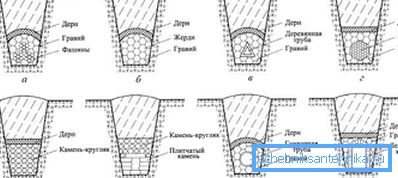
Open drainage can easily cope with the removal of moisture from the surface, but if it is necessary to prevent groundwater from affecting the foundations of a building, it is better to use closed systems. Such communications will cost more, and it will be difficult to make them without the involvement of specialists.

These systems are used in areas where groundwater is close to the surface. Drainage pipes are laid in the ground throughout the territory (or close to the foundation of the house). All of them are connected in a single system and remove the water in the drain. Often this is a natural ditch or ravine, but you can make a sewer well. Such a structure will collect water, and later it can be used for technical needs or pumped out with the help of an ashenizator machine.
Preliminary stage
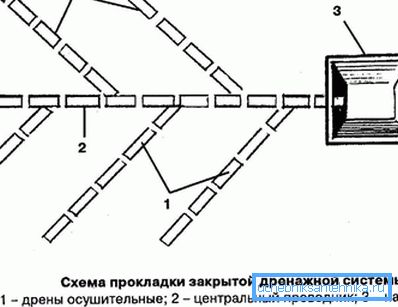
Before starting to construct a drainage of a garden plot or a summer residence, it is necessary to create a plan for the future system and select suitable materials. It is very important to make a scheme, the efficiency of water removal will depend on it.
The easiest way to make a plan of surface drainage. To do this, it is necessary to track the natural paths of the runoff of water from precipitation and melting snow. Each site owner knows what “roads” water flows and where it accumulates. All of these areas are plotted on the plan, and subsequently, trenches for sewage are being digged along this plan.
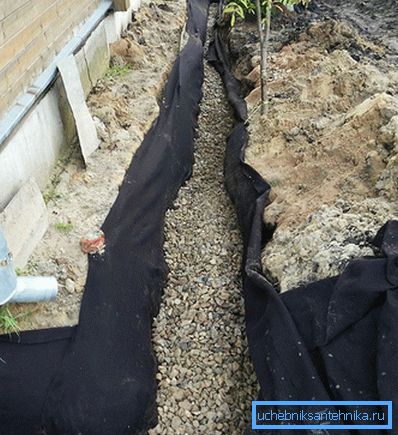
Specialists will make a cut of the soil, according to its structure, you can understand the place of pipe laying. As a rule, drains are located at the junction of the permeable layer and the soil, which becomes an obstacle to the passage of moisture. For example, quite often on the plots on top is a layer of fertile land. Its thickness rarely exceeds 20–30 cm. After it comes a layer of sandy or sandy soil, and then clay soils lie. It is in place of the joints of the last lower layers that the drainage pipes are laid.
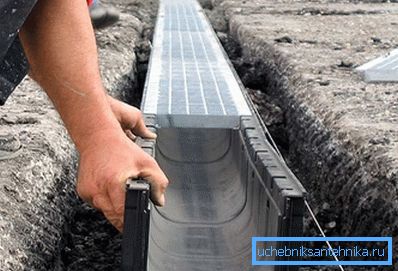
If we talk about the choice of materials, it also depends on the system used. As mentioned above, with external drainage for removal of water you can use:
- Gutters or trays. These designs can be made of various materials. Today, plastic troughs are most often used, but they can be made of concrete, metal or other available tools.
- You can do without the gutters, if you fill the ditch with gravel. In trenches up to 2/3 of the height, stones of medium fractions are filled up, then fine gravel is poured to the top. You can cover the trench from above with turf.
- You can use fascine drainage using brushwood bundles.
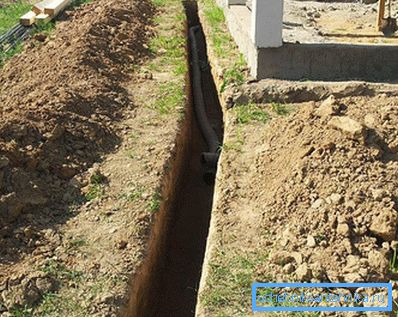
If the site’s drainage is constructed by laying pipes (drains) into the ground, then their choice, or rather, the way they are laid, will largely depend on the properties of the soil. For example:
- in case of sandy soil, it is necessary to use a sprinkling of crushed stone as a filter and wrap everything up with geotextile. This method of laying will help prevent silting of the holes in the pipes, and thus improve the outflow of water;
- if the soil is loamy, then wrapping them with geotextile is also necessary, but you can do without rubble;
- in the presence of clay at the site, only a crushed stone filter can be used;
- if there is crushed stone in the territory, then the presence of any filtering material is optional.
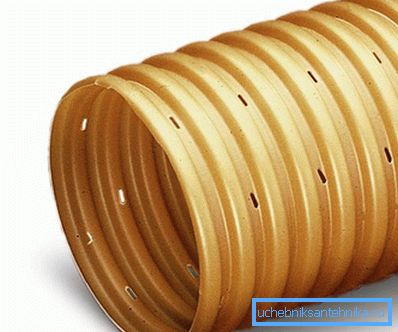
In addition to the drains themselves and the filtering material, it is necessary to prepare manholes for the construction of deep drainage. They are installed on each bend of the pipeline or on long straight sections. Such designs are easier to buy ready-made, as a rule, they are made of plastic and are already equipped with all the necessary inlet and outlet connections and a hatch.
Progress
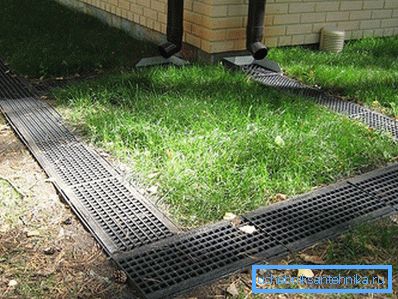
Arrangement of the surface water drainage system is easy. Small trenches dig along pre-marked lines. Further, if gutters are used, a 10-centimeter sand cushion is laid on their bottom (sand must be tamped), the gutters are put on top of it. From above they are covered with bars so that the garbage does not clog up the system.
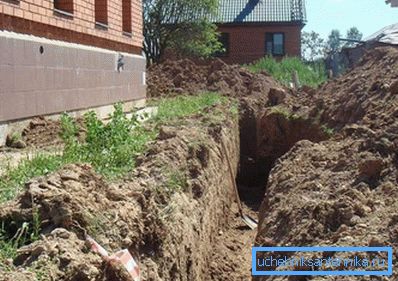
It is more difficult to build deep drainage. Here it is necessary to perform a large amount of earthworks. First, it is necessary to dig trenches of sufficient depth along the previously marked lines. Secondly, in places of bending of the system and on long straight sections digging pits for equipment of manholes.
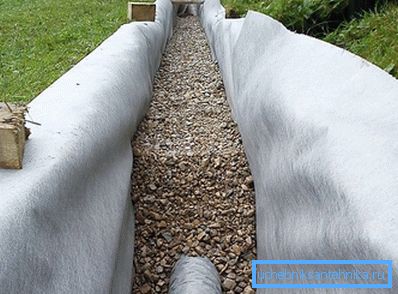
The next step will be the preparation of the base. If the soil at the site requires the laying of geotextiles, then the material is laid out over the entire surface of the trench. If there is no need for geo-fabric, then a sand cushion 10-15 cm thick is arranged on the bottom (sand must be tamped). Then, if necessary, the same layer of rubble is poured. After that, pipes (drains) can be laid and joined. From above, also, if necessary, a layer of rubble is poured and all this is wrapped in geotextiles.
When preparing the foundation of the trenches, you must observe the slope. It is made at the rate of 7 cm for every 10 meters of pipes. The slope should be in the direction of the catchment points. It is better to check the slope before laying the pipes, otherwise you will have to redo the whole system.
Video
In this video, you will hear tips and recommendations about the drainage area:
A photo

